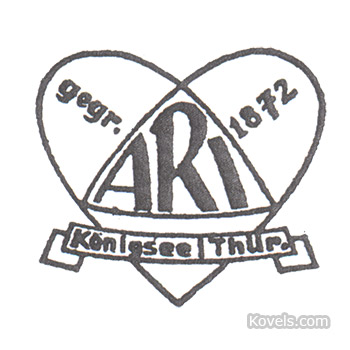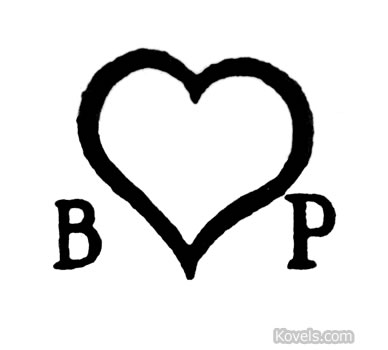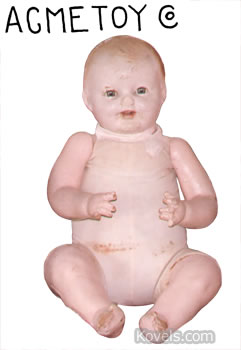August Riedeler Mark
Q: I have a little dollhouse boy doll with movable arms and legs. He is marked with a heart with the letters "ARI" inside and "Konigsee Thur" in a banner across the bottom of the heart. The doll is made of rubber and is wearing his original outfit of pale blue shirt, black pants, red belt and bowtie. He is 4 1/2 inches tall. Who made this doll and how old is he?
A: The mark was used by August Riedeler, a manufacturer of porcelain and dolls in Konigsee, Thuringia, Germany, starting in 1864. Riedeler made porcelain, while his wife made toys. His son took over the factory in 1872 and began making porcelain dolls and doll heads. Riedeler built a factory in Garsitz in 1892. The company has made dolls of porcelain, cloth, celluloid, rubber and vinyl, and has also made some other toys. Dollhouse dolls were usually sold in sets. Sellers list them as made in the 1970s and '80s. A family of five dolls, with mother, father, boy, girl and baby, was advertised online for $65. Single dolls sell for $4 to $24, depending partly on the condition of the doll and its clothing.





